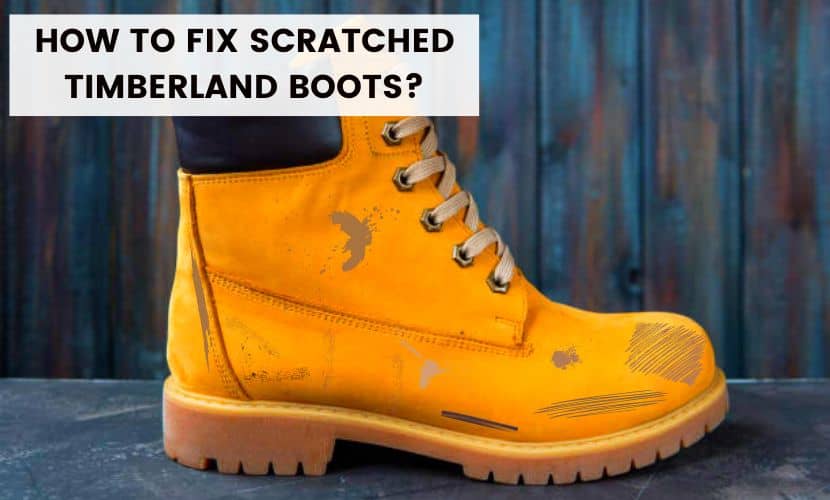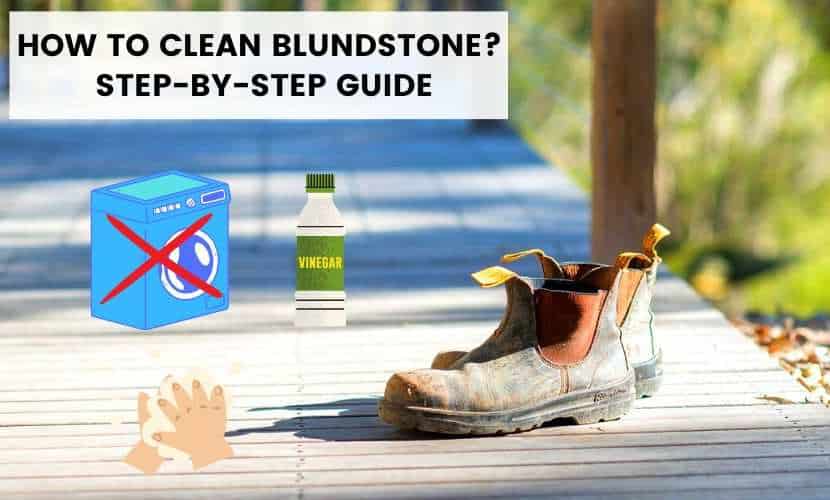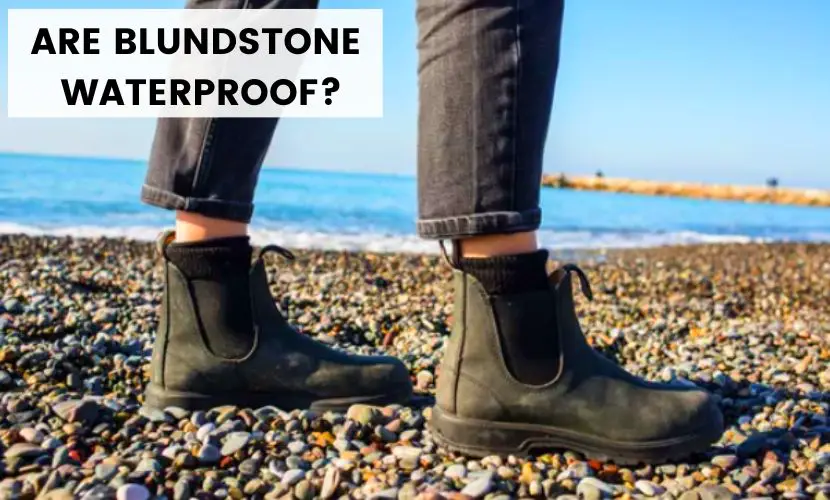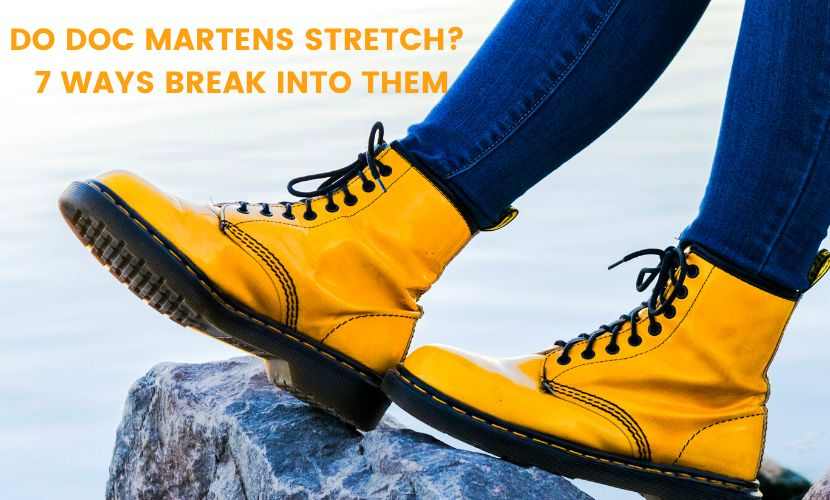An uncomfortable and irritating sensation might cause blisters on the heels of boots. The blisters are caused by friction between the boot and the skin. However, some methods can be quite effective in avoiding blisters from developing.
The shoes’ style and proper size may be helpful for preventing blisters. Before purchasing shoes, the user should verify the size and purchase the appropriate size; otherwise, blisters will form if the shoes are too tight or loose. Furthermore, try to get boots with soft and even interiors, and avoid shoes with uneven edges, which can create blisters due to friction.
If you wear new shoes for long amounts of time, they might cause blisters on your feet; thus, attempt to break in shoes gradually by wearing them for shorter periods of time and then increasing the amount of time you break in the boots. Furthermore, to reduce friction between your shoes and heel, apply lubricants and different padding to assist prevent blisters.
What is Blisters?
As a result of chemical exposure, heat, and friction between boots and the heels, liquid-filled pockets, called blisters, are formed. Those on foot for elongated periods can get blisters on their skin, which can be very hurtful and burning.
Mushy water-filled pockets form on the skin if exposed to friction for a long time. Due to some infection, the liquid present in the blister can be bloody and or yellow; otherwise, it is obvious. It is considered that the body tries a lot to shield itself from further wear and tear by forming blisters.
The blisters can appear mainly on the toes and heels; apart from that, they can form on other body parts. Poorly fitted shoes are also a reason for the formation of blisters, as socks cannot offer the required padding, and then extraordinary sweating happens. Moreover, blisters can also be generated due to some viral or fungal infection.
Before purchasing shoes, examine the sizes and then buy the perfect size that offers additional cushioning. The feet should remain dry inside the socks; use moisture-absorbing socks. Carry out breaking in the boots slowly so your feet get used to the new shoes.
The risk of the formation of infection intensifies if you pop the blisters once they are created. Otherwise, the healing process can be painful and take time. Try to use a chunk of moleskin or a bandage if you want to lessen the friction between your feet and shoes. To avert the infection, use a germ-free gel after washing the affected area with water and soap.
Choosing the Right Boots
Choosing the perfect pair of shoes is critical for averting the blisters forming on your skin. If you want to purchase boots that will help you in preventing blisters, follow the main factors given below:
Fit and Size
Size and fit are the chief factors when selecting the perfect boots. The blisters can form if the shoes are not correctly fitted. Try to check the size of the shoes by wearing socks while buying the desired size of the shoes. You will know how the shoes will fit while walking or hiking.
Try to purchase the perfect size; do not buy loose or tight shoes. If the boots are loose, your feet will move freely, and then blisters will be formed. Conversely, friction can be produced between the shoes and the feet if the boots are too tight, resulting in blisters.
Material and Quality
Averting the blisters can be affected because of the use of quality and materials of the shoes. Porous materials in manufacturing boots can play a vital role in preventing blisters from being created as the air flows around the whole shoe and does not allow the feet to sweat.
The blisters can also be avoided by using boots that are structured with finer construction methods and the finest quality materials. The friction between the shoes and the heels can be minimized if the tongues and collars of the boots offer extraordinary cushioning.
Break-In Period
Ultimately, if you want to use your shoes for hiking and walking for extended periods, try to break in your boots slowly and efficiently. As a result, the shoes will be snug and supple enough and will definitely adjust according to the shape of your feet. To break in the boots, wear them around the house for shorter periods, as soon as they mold to the shape of your feet, and then wear them for an elongated time. You will get blisters if you try to wear new shoes for long walks or hikes.
Break-in period, quality, and material utilized in the formation of shoes, and the shoes’ size and fit can significantly prevent blisters from creating on the feet and offer you comfort during your walk.
Proper Foot Care
The user should maintain good foot health to avoid blisters on their heels. You should trim your nails, moisturize your feet, and keep your shoes well-hygienic if you want perfect foot care.
Hygiene
To avert the blisters from creating on your heels, keeping your feet dry and clean is necessary. Try wiping your feet properly after washing them with lukewarm water and soap, and use a towel or other cloth to dry your feet.
Various foot issues, mainly blisters, can be caused by the moisture that remains if you do not dry your feet properly; fungal and viral infections can also lead to blisters.
Moisturization
You can avoid the rupture and dryness in your feet if you moisturize them properly; otherwise, blisters can form. To maintain the softness of your feet, try to use a lotion or cream of perfect quality. Moreover, to prevent a fungal infection from forming between the toes, use a good quality moisturizer between them; otherwise, the moistness can cause blisters.
Nail Trimming
To prevent blisters and other foot issues, try to trim your nails regularly so there are no ingrown toenails. Make sure to make the round edges of the nails; while cutting the nails, cut them straight and short enough. Use a good quality nail cutter and nail filer to cut and then file your nails.
You can prevent the blisters from occurring by following the guidelines given above. Try to purchase boots that fit perfectly, are tight enough, and are loose. Remember to put a bandage on the blister if it pops up; otherwise, you could have a severe infection.
Protective Measures
There are various protective measures to prevent the blisters from forming. The friction and pressure can be reduced if you follow the measures efficiently. As a result, no blisters will be created.
Socks Selection
Selecting the perfect pair of socks can play a significant role in preventing blister formation. Try to use moisture-absorbing socks that will reduce sweating less fo,f sweat, and as a result, blisters will not form. Socks made up of synthetic blends or wool can help maintain the dryness of shoes, and as a result, blisters will not be created because of less friction between the boots and the skin.
Furthermore, distinct kinds of socks are made mainly to shield your feet from blisters, as extraordinary cushioning helps lessen the friction produced between the feet and the boots.
Use of Padding
Padding can be used to prevent blisters from forming on your feet. Blister pads and moleskin are the main products included in the padding, as they help reduce the friction between the feet and the shoes. However, try to keep the pads in the correct position; otherwise, it can cause friction to form and create blisters.
Friction-Reducing Powders
There are powders available in the t that are used for reducing friction. Try to use the powders mainly manufactured for lessening friction, and you can apply them to the boots or directly on your feet. Generic powders are less fruitful as compared to these friction-reducing powders.
If you use padding, friction-reducing powders, and the kind of socks, you can reduce the amount of friction and pressure produced and prevent blisters from forming.
Lacing Techniques
The blisters on the heels can be prevented by following the lacing techniques. These efficient techniques can help avert the production of friction and allow the proper placement of feet inside the boot, and as a result, no blisters will form. To prevent the formation of blisters, try to follow the lacing techniques given below:
Heel Lock Lacing Technique
To avoid heel slippage, try to put the heel into the perfect position by using the heel lock lacing technique. Try to tie your laces at the top of your shoes by twisting the laces on all sides of your ankle. The foot can not slide inside the boots if the laces are tied correctly, giving you a snug and supple fit. Those with narrow and tight heels can find this heel lock lacing technique an ideal way to prevent blisters.
Surgeon’s Knot
Another most effective and fruitful method of preventing the heels from blisters is the surgeon’s knot. During this process, try to make a knot at the lower where the laces are tied. Due to this technique, the foot will not slide inside the shoes as the laces fit around the foot tightly.
Alternate Lacing
If you skip a set of loops while tying the laces of the shoes, it is called alternate lacing. The foot inside the boots remains positioned as the alternate lacing tightens the fit around your foot, and it is considered the perfect technique for preventing the foot from blisters. Those who require additional room in the toe box because of the broader feet should definitely go for this effective technique.
Lace Lock
Lace lock is another productive technique utilized in preventing blisters. During this kind of technique, loops of the laces are made and then spread around the ankle, and then at the end, the loops are tied at the top of the shoes. The foot cannot slide inside the boots because of the comfy and perfect fit around the ankle if this technique is used correctly. Those with narrow and slim heels can go for the lace lock technique.
Overall, you should go for adequate lacing techniques because if you want to prevent blisters, these techniques are necessary. The feet remain blister-free and snug if these techniques are appropriately used, as the user can also wear the boots for extended periods.
Boot Maintenance
To prevent blisters on your feet, it is obligatory to take proper care of the boots. You can maintain your boots by following several tips given below:
Regular Cleaning
Dust and dirt are the main reasons for the formation of friction between your shoes and skin, and they can irritate your skin; therefore, you should clean your boots regularly. To get rid of the dirt and debris from your shoes, use a mushy fabric or brush on the surface of your boots.
Remember to use water and gentle soap on your shoes if some areas are affected by solid stains, and then wipe the shoes softly. Severe chemicals on your shoes can damage the leather of the boots, so do not try to use such chemicals.
Conditioning Leather
To avoid cracking and maintain the agility of the leather, the user should condition the shoes properly. Use a top-quality leather conditioner to keep the leather supple and moisturize it correctly.
As a result, the leather of the boots will not dry up; otherwise, the rupturing of the leather can cause blisters on your feet.
Proper Storage
Another way to prevent blisters is to place and store your shoes efficiently and carefully. The severe temperatures and the direct sunlight can instantly damage your boots, making the leather split and dry out. Therefore, try to keep your shoes far away from direct sunlight and heat origins and place them in a dry and chill place.
If you want to prevent your shoes from rupturing and maintain the appearance of the boots then put a lot of newspapers inside your boots or you can also use shoe trees. You can prolong the boots’ life and prevent the formation of blisters on your heels simply by following the efficient techniques for maintaining the shoes.
When to Seek Professional Help
Most commonly, simple medication can be used at home to cure the blisters formed on the heels because of the shoes. Otherwise, you should go for medical assistance if the blister is infected, sore, or large.
Reach out to the doctor if you observe some signs related to the blisters:
- In the case of diameter, the blister is more significant than a quarter inch.
- The pain and soreness of the blister influence your daily ventures.
- If you find it difficult to move and walk because of the formation of blisters on the lower part of your foot.
- A burning color, pus, and heat are coming out of the blister.
- The risk of complications can intensify if the individual has diabetes or the immune system is weak.
See a doctor if you notice any of the abovementioned signs in your blister. The doctor will recommend some antibiotics to prevent and cure the blister, which will heal instantly because of the safe drainage.
This can be severe if the blisters do not heal using home remedies or if you get the blisters very often. If you have such problems, try to share all the details with a doctor who will suggest the proper medications.
Overall, if the blisters are very irritating and painful and you observe some infection, try to consult a doctor; otherwise, you can treat small blisters by using home remedies.
What strategies can be employed to prevent heel blisters when wearing new boots?
Wearing your new boots can be a nightmare for you if you face any difficulty in wearing them and get blisters as a result. Whenever you are going to wear new shoes, try to utilize the several strategies below to avoid the formation of blisters.
Choose the Right Size
First, try to choose the perfect size when considering new shoes; the correct size can help prevent the formation of blisters. You will get blisters if the boots are too tight or loose because of either friction or rubbing. To attain a perfect fit, remember to compute the size and test the shoes before buying them.
Break In Gradually
The blisters on your feet can also be averted if you carry out the break-in process efficiently. Try to wear the boots for a shorter time, and when the boots adjust according to the shape of your feet, then wear the shoes for an extended time. The break-in process helps reduce the friction between the shoes and the feet, and then your boots start molding to the appearance of the feet.
Use Anti-Blister Socks
Whenever you wear new shoes, try to use anti-blister socks, as they help prevent blisters and reduce the friction between the boots and the feet. These help absorb the the moisture away from your feet as permeable materials are used to manufacture these socks. The risk of the blisters is minimized as the socks can provide support and padding to the feet.
Apply Lubricants and Padding
The blisters can be prevented while wearing new shoes if padding and some lubricants are applied to the heels. Powder and Vaseline are the leading lubricants in minimizing the friction between the boots and the feet. On the other hand, a foam or moleskin works as padding that, as a result, offers cushioning to the feet and prevents blisters.
In conclusion, using lubricants and padding, anti-blister socks, and then breaking in new boots are various techniques of preventing blisters on the heels and you can wear the shoes comfortably then. The users will not face any irritation and pain of blisters if they follow the above mentioned techniques efficiently.
What are the best practices for breaking in boots to avoid heel blisters?
It is obligatory to prevent blisters on your feet as it is an irritating procedure to break in new boots. Whenever you try to break into new shoes, remember to follow several best practices given below:
1. Wear your boots around the house
Try to wear the new shoes for several hours in the beginning when you try to break in new boots. The risk of formation of the blisters can decrease when you break in your new shoes by walking around the house, and as a result, your boots will mold to the shape of your feet.
2. Use boot stretchers
Use a boot stretcher if you find new boots too tight to wear. The risk of the formation of blisters will be minimized as the shoes will be stretched, and the user will find comfort in wearing the new shoes.
3. Wear thick socks
Wear a pair of thick socks to prevent blisters from forming on your heels by minimizing the friction between the boots and your feet.
4. Apply moleskin or blister pads
Always use blister pads or moleskin if you feel any soreness or irritation on your blisters. Because of padding, the blisters will avert from forming as friction will be reduced between the boots and the feet.
5. Use a leather conditioner
You will feel comfortable in wearing your new shoes if the leather becomes soft and this suppleness and softness come with using a leather conditioner. The risk of formation of the blisters on your heels will be minimized. You will not have to face the pain and irritation of blisters if you break into your new shoes by following the guidelines given above.
What socks or insoles are recommended to prevent blisters from work boots?
Whenever you wear new work boots, try to use insoles and perfect socks that will help prevent the formation of blisters on the heels. You can use various kinds of insoles and socks given below:
Socks
- Double-layer socks: The fundamental way of preventing the blisters from the heels by minimizing the friction is to use double-layer socks. A barrier is formed between the shoes and the skin as the inner membrane remains close to the skin. On the other hand, the outer membrane of the socks shifts with the boots. Balega and Wrightsock are two of the best-known brands of double-layer socks.
- Moisture-wicking socks: Some socks can absorb the sweat from the skin, and such socks are called moisture-wicking socks. As a result, the risk of formation of blisters is minimized as the feet remain dry. Natural fibers or synthetic materials can prepare these socks; nylon and polyester are included in synthetic materials, and natural fibers contain merino wool.
- Padded socks: The formation of friction and pressure can be reduced on the heels because of the use of additional cushioning attained by padded socks, and as a result, the blisters are not formed. Try to purchase socks that contain extraordinary padding in it.
Insoles
- Gel insoles: To minimize the pressure on the heels, Gel insoles areas prevent blisters from creating because these can absorb the shock. Various kinds of thicknesses are used to prepare the gel insoles, and you can crop the insoles in any shape and size.
- Memory foam insoles: Customized support is provided in the case of the memory foam insoles as they mold to the shape of the food accordingly. As a result, it helps a lot in averting the blisters from creating as the pressure on the heels is reduced.
- Arch support insoles: The weight across the foot can be divided evenly if insoles called Arch support insoles help minimize the pressure on the heels, and then blisters are not formed. Different kinds of support are utilized in the shoes, varying from low to high.
To get the proper fit, try to select well-fitted socks; otherwise, the wrong fitting of the socks can increase the friction and pressure on the heels, causing blisters if you want to wear shoes for extended periods.
Conclusion
In conclusion, if a person wants to rejoice in outdoor activities and does not want to ruin these ventures, then the person needs to avert the blisters from forming on the heels as the friction between the shoes and the feet will be reduced. The users can have fun while wearing the boots by following the guidelines in this article.
You should take several necessary steps before buying the boots, including discovering the perfect size and the procedure for breaking in. Then, you should invest in the right pair of socks. Remember to take extra care of your feet and do not let them stay sweaty while wearing the boots. Another way to prevent blisters is to use shoe inserts in your shoes or try to use any anti-blister shoes. Furthermore, try to buy socks that are perfect for absorbing the moist, and the friction between the feet and shoes can also be minimized if the users use tongue pads.
Overall, you can enjoy wearing the new boots if you know enough about averting blisters and using the perfect steps and techniques to reduce friction. You do not need to stress about getting the blisters that can ruin your outdoor activities if you take precautionary measures and follow the tips given in this article.




